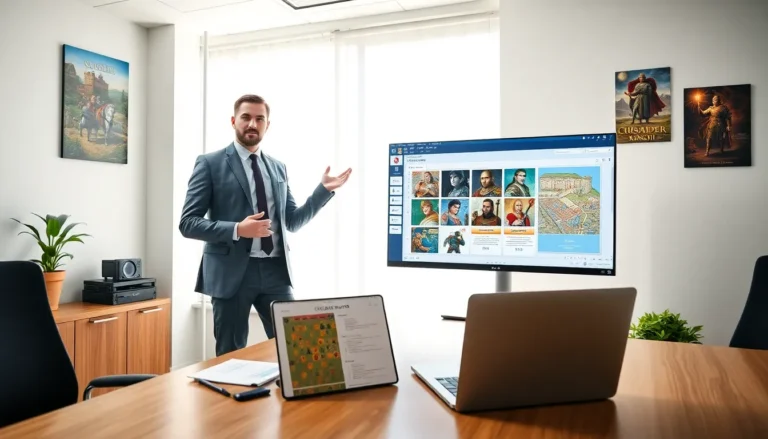Table of Contents
ToggleImagine trying to find a Wi-Fi signal in a coffee shop from the Stone Age, frustrating, right? Now, apply that feeling to outdated software systems. Enter the Retrofit Legacy WebBizMagnet PLC Python Library, your modern-day answer to the anguish of legacy systems. In this text, we’ll investigate into why retrofitting these old digital behemoths is essential, explore what this particular Python library is all about, and share the challenges and best practices for a successful transition. Let’s jump into the future, one line of code at a time.
Understanding Legacy Systems and Their Importance

Legacy systems are the digital platforms that many companies built their empires on. You may think of them as the seasoned veterans in the world of technology, reliable yet a little rusty. Often, they hold critical data and perform essential functions that keep businesses running. Understanding their importance is key. For many companies, their legacy systems are intertwined with everyday operations, making it challenging to shake them off without risking business continuity.
Unfortunately, these systems come with a set of limitations. The coding languages used may be outdated, and integration with modern technologies can feel like fitting a square peg into a round hole. The challenge lies in adapting these critical assets to new technological advancements without losing the value they hold. So, many organizations are turning toward tools like the Retrofit Legacy WebBizMagnet PLC Python Library to modernize their infrastructure.
What Is the WebBizMagnet PLC Python Library?
The WebBizMagnet PLC Python Library is akin to a Swiss Army knife for modern developers dealing with legacy systems. Designed specifically for interactions with WebBizMagnet PLC infrastructure, this library simplifies complex functions and enables seamless operation from Python.
Essentially, it empowers developers to connect antiquated machines and systems to shiny new technologies without starting from scratch. You can think of it as a bridge that allows the old and new to coexist. Leveraging this library means developers can easily write Python scripts to control legacy processes, retrieve data, and interact with platforms that were designed long before Python was even a twinkle in Guido van Rossum’s eye.
Key Features of the Retrofit Library
So, what makes the Retrofit Library stand out? Here are some key features that shine:
- User-Friendly Interface: Designed with simplicity in mind, this library makes it easy for developers to access and manipulate legacy systems without extensive training.
- Comprehensive Documentation: Well-structured and thorough documentation helps guide developers through the various functionalities and provides troubleshooting tips.
- Flexible Functionality: The library supports various operations, from data retrieval to event management, making it versatile for multiple applications.
- Robust Error Handling: Recognizing that retrofitting can be tricky, the library includes robust error management features to quickly diagnose issues and provide clear feedback.
- Community Support: With an active community of users, getting help and sharing insights has never been easier. Developers can connect and collaborate, enhancing their experience.
These features collectively provide a solid foundation for any developer looking to bring legacy systems into the modern age.
How to Retrofit Legacy Systems with Python
Retrofitting legacy systems using the WebBizMagnet PLC Python Library involves a few critical steps:
- Assessment: Begin by understanding the current state of the legacy system. What functionalities are crucial? What processes are outdated? Identifying these aspects ensures a focused approach.
- Planning: Create a roadmap for the retrofitting process. Define the scope and outline the specific tasks that need completing. Planning is essential for a smooth transition.
- Implementation: Start by installing the Retrofit Library and integrating it with the legacy system. Use Python scripts to establish communication and control mechanisms.
- Testing: Rigorous testing is vital. Ensure that all integrations work as intended and that there are no unforeseen glitches. This step can save a lot of headaches later on.
- Documentation and Training: As you retrofitted, document every decision and change. Provide training for team members who will interact with the updated system. Effective training leads to greater adoption and reduces resistance.
Challenges in Retrofitting Legacy WebBizMagnet PLC Systems
While the benefits of retrofitting are enticing, the road can be bumpy due to several challenges.
- Integration Hurdles: Integrating legacy systems with modern technologies often results in compatibility issues. These can stall the process and frustrate developers.
- Data Migration Problems: Shifting data from aging systems to new frameworks can be dicey. Data formats may not align, and there’s always the risk of data loss.
- Organizational Resistance: Change can be daunting. Employees accustomed to old systems may resist new processes, fearing disruption to their workflows.
- Budget Constraints: Retrofitting can become costly. Organizations must balance the need for modernization against financial realities, which can hinder progress.
These challenges, while daunting, are not insurmountable. With careful planning and a strategic approach, companies can effectively navigate these obstacles.
Best Practices for Successful Retrofitting
To achieve a successful retrofitting project, consider these best practices:
- Start Small: Initial small-scale retrofitting can allow teams to refine processes and develop expertise before taking on larger projects.
- Involve Stakeholders: Engaging all relevant stakeholders throughout the process helps in addressing concerns and gaining valuable insights.
- Continuous Training: Educate team members continuously to ensure they’re comfortable with the new systems. Regular training mitigates gaps in knowledge.
- Iterative Development: Adopt an iterative approach, allowing for refinements based on testing and feedback. Flexibility can lead to better outcomes.
- Monitor and Adapt: After implementation, continuously monitor the retrofitted systems. Adapt based on performance data and user feedback to ensure sustained efficiency and satisfaction.






